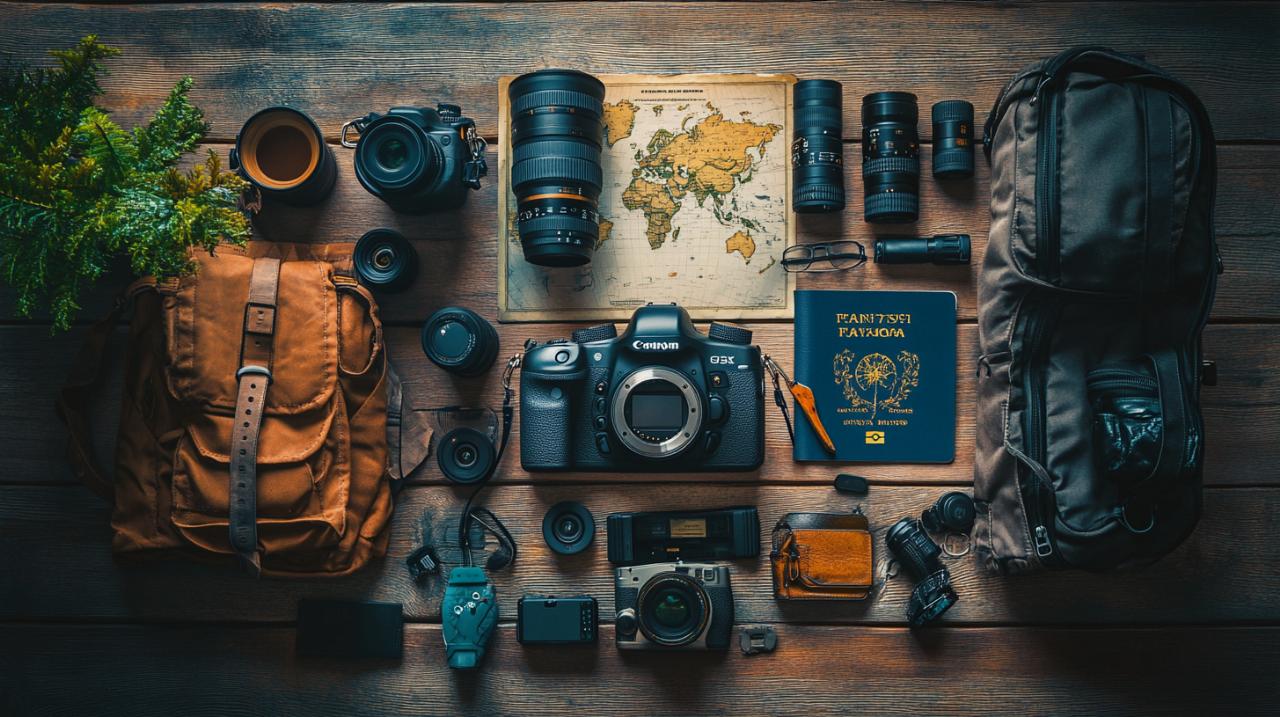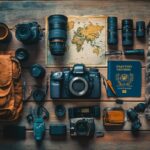Photography enthusiasts often find themselves at a crossroads when determining which equipment will truly elevate their craft. The journey from casual snapshots to compelling imagery involves more than just passion; it requires thoughtful investment in the right tools. Whether you are capturing portraits in a studio or exploring the great outdoors, understanding the fundamental gear that professionals rely upon can transform your creative vision into reality. This comprehensive guide delves into the essential photography equipment that every dedicated hobbyist should consider, from camera bodies and lenses to lighting and support systems.
Must-Have Camera Bodies and Lenses for Aspiring Photographers
Selecting the right camera body forms the cornerstone of any photographer’s toolkit. The debate between DSLR cameras and mirrorless cameras continues to shape purchasing decisions across the industry. DSLRs have long been celebrated for their robust build quality, excellent battery life, and affordability, yet their bulkier design can be a drawback for those seeking portability. Meanwhile, mirrorless cameras have surged in popularity due to their lightweight construction, advanced autofocus capabilities, and superior video performance, though they typically offer shorter battery life and a more limited range of accessories, a situation that is steadily improving as manufacturers invest in these systems.
When building your photography arsenal, it is worth exploring resources such as https://www.agfaphoto-gtc.com/en/ to discover a wide array of cameras and accessories that cater to various creative needs. Among the recommended professional photography equipment, models such as the Sony A7III and Sony A7IV stand out for their versatility. The Sony A7III is particularly favoured for studio work, while the Sony A7IV excels in outdoor photography thanks to its advanced features and customisable buttons. For those who appreciate the reliability of DSLRs, the Nikon D750 and Nikon D810 remain trusted options, offering dependable performance in diverse shooting conditions. Additionally, the Canon EOS R5 has become a go-to choice for wedding and event photography, the Nikon Z5 presents an affordable entry point into full-frame mirrorless systems, and the Fujifilm X100VI appeals to those who value built-in processing and a compact form factor.
Choosing the Right Camera Format: Full-Frame versus Crop Sensor
Understanding the distinction between full-frame cameras and crop sensor cameras is crucial for making an informed investment. Full-frame sensors deliver superior performance in low light conditions, producing images with exceptional detail and dynamic range. However, this advantage comes at the cost of increased size, weight, and expense. In contrast, crop sensor cameras offer a more budget-friendly alternative, providing excellent versatility and a lighter build. These cameras also benefit from an effective increase in focal length, granting photographers extra reach when shooting distant subjects, which can be particularly advantageous in wildlife and sports photography. For beginners, models like the Nikon D5600 offer a user-friendly introduction to the world of interchangeable lens photography, balancing ease of use with impressive image quality.
Building your lens collection: prime and zoom options
Lenses are the heart of photographic expression, and assembling a well-rounded collection is essential for capturing diverse subjects and scenes. Prime lenses are renowned for their sharpness and wide apertures, making them ideal for low light photography and achieving beautiful background blur. Popular focal lengths such as 35mm, 50mm, and 85mm serve a variety of purposes, from street photography to portraiture. On the other hand, zoom lenses provide unparalleled versatility, allowing photographers to cover a broad range of focal lengths without the need for constant lens changes. The 24-120mm and 70-200mm f/2.8 are staples in many professional kits, with the latter being particularly favoured for its exceptional performance in both studio and outdoor environments. The Sony GM I version of the 70-200mm f/2.8 is highly regarded, though the GM II is recommended for those with a more generous budget. Additionally, the Tamron 28-75mm f/2.8 offers an excellent balance of quality and affordability.
Specialty photography lenses further expand creative possibilities. Macro lenses, such as the 100mm, are indispensable for capturing intricate details in subjects like flowers and insects. Ultra-wide lenses, ranging from 16mm to 35mm, are perfect for landscape photography, enabling photographers to encompass sweeping vistas within a single frame. For those drawn to wildlife photography, super-telephoto lenses in the 150-600mm range provide the necessary reach to photograph distant animals without disturbing their natural behaviour. Investing in quality photography lenses ensures that your images remain sharp, vibrant, and true to your artistic vision.
Critical accessories to enhance your photography kit
Beyond camera bodies and lenses, a range of photography accessories plays a pivotal role in refining your workflow and expanding your creative capabilities. These tools not only improve the technical quality of your images but also enhance your efficiency and comfort during long shooting sessions. From support systems that eliminate camera shake to lighting equipment that transforms the mood of a scene, each accessory serves a specific purpose in the pursuit of photographic excellence.
Tripods and Support Systems for Sharp Images
Stability is paramount in achieving consistently sharp images, particularly in situations involving long exposures, macro photography, or low light conditions. Camera tripods are indispensable tools that provide the necessary steadiness to prevent motion blur. Carbon fibre tripods are highly prized for their lightweight construction and ability to dampen vibrations, though they come with a higher price tag. Conversely, aluminium tripods offer durability and affordability, albeit at the expense of additional weight. For photographers who require mobility without sacrificing stability, monopods and gimbal heads provide specialised support, ideal for tracking fast-moving subjects or navigating challenging terrain. Selecting the right support system depends on your specific shooting style and the environments in which you typically work.
Lighting Equipment and Filters for Creative Control
Mastering light is one of the most transformative skills a photographer can develop, and the right lighting equipment is essential for achieving professional results. Speedlights are celebrated for their portability and versatility, making them a popular choice for photographers who need to work in dynamic environments. While their power output is more limited compared to larger units, models such as the Geekoto GTR and GT200 offer impressive performance for their size. Studio strobes, on the other hand, deliver greater power and faster recycle times, making them ideal for high-volume shoots. The Paul C. Buff Einstein units, often paired with softboxes and an octobox for achieving attractive catchlights, are favoured for studio work. For outdoor photography, the Godox AD200 and AD200pro stand out due to their portability and competitive pricing, typically ranging between two hundred and three hundred fifty pounds depending on the model.
Continuous LED lights provide a what-you-see-is-what-you-get approach, allowing photographers to preview the exact lighting effect before capturing the image. This makes them particularly valuable for video work and situations where precise lighting adjustments are required. The Geekoto NC200 is a notable option in this category. Light modifiers, including softboxes, umbrellas, and reflectors, further enhance control over the quality and direction of light. A Westcott Eyelighter, for instance, is an excellent tool for headshots, providing flattering illumination that enhances the subject’s features.
Lens filters are another crucial component of a well-equipped photography kit. Polarising filters reduce glare and enhance colour saturation, making skies appear more dramatic and water surfaces more transparent. Neutral density filters enable photographers to use slower shutter speeds or wider apertures in bright conditions, facilitating creative effects such as motion blur in waterfalls or shallow depth of field in daylight portraits. UV filters, though debated among professionals, offer an additional layer of protection for expensive glass.
Beyond these core items, photographers should consider investing in robust camera bags designed to protect and organise their gear. Photography backpacks are ideal for hiking and travel, distributing weight evenly across the shoulders, while shoulder bags provide quick access during events. Roller cases are well-suited for transporting larger setups to studio locations or through airports. Memory cards and reliable storage solutions, including portable SSDs, RAID systems, and cloud storage, are essential for safeguarding precious images. Business management software such as Studio Ninja and photo editing software like Adobe Lightroom, Adobe Photoshop, and Capture One streamline post-production workflows, while calibrated monitors and graphics tablets ensure precise editing.
Maintenance tools, including sensor cleaning kits, microfiber cloths, lens pens, rocket blowers, and silica gel packets, help preserve your equipment in optimal condition. Power solutions such as extra camera batteries, dual battery chargers, portable power banks, and battery grips ensure that you never miss a shot due to depleted power. Creative photography tools like prisms, lens balls, fairy lights, and smoke bombs open up new avenues for artistic expression, pushing the boundaries of conventional imagery.
Building a comprehensive photography kit is an ongoing journey that evolves alongside your skills and creative aspirations. Investing in high-quality professional photographer tools and continually educating yourself about new techniques and technologies will ensure that your passion for photography continues to flourish. Whether you are capturing intimate portraits, sweeping landscapes, or dynamic events, the right equipment empowers you to translate your vision into compelling visual stories.








